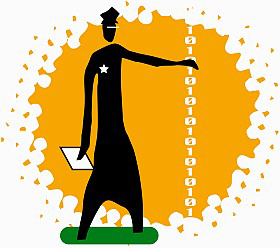Apply Business Strategies to your Agency’s Social Media Plan
 Some of the biggest hurdles in building an agency’s social media strategy comes right out of the starting gate: How do you get started? What are you supposed to post? How are you supposed to interact with the community?
Some of the biggest hurdles in building an agency’s social media strategy comes right out of the starting gate: How do you get started? What are you supposed to post? How are you supposed to interact with the community?
By applying business strategies to your agency’s social media plan, you define clear-cut goals and objectives and develop relationships through social media communications.
Step one: Define and analyze your target audience
Your first step is to define your audience. Will your agency target the public? Other law enforcement agencies? Prospective recruits? The media? By narrowing your focus to one or two of these target audiences, you will help your agency craft more meaningful communications. If you target too many different audiences, your messages will seem random and insignificant.
In this research phase, you will also need to analyze how your audience uses social media. You’ll need to determine what mediums they use and how they use them. If your audience is primarily using Myspace and Twitter to talk about local news, you’ll not be serving your target audience’s best interests if you decide to use Facebook and Nixle to give them the weather report. Don’t be afraid to ask your audience for input – create an online message board to ask which mediums people use and why they use them, or ask citizens face-to-face while you’re patrolling the community.
Step two: Define your brand
A brand is an image, slogan, symbol or anything that can be used to define a business, agency or organization. Your agency’s social media brand is going to be what your audience should and will expect from your agency. You should start defining your brand by asking, “What sets us apart?” You can’t be all things to all people on social media, so a best practice is to pick one or two things to focus your efforts on. Your focus becomes your brand.
Will your agency’s brand be public safety? Traffic problems and patterns? Emergency management? Community events and issues? By choosing a focus, your agency brands itself as the authority on tips for avoiding that messy construction zone or a resource for reporters with public safety questions.
Step three: Define your message and personality
Once you define your agency’s brand, you should be able to craft messages fairly easily. The key to connecting with people is to remember that social media is just that – social. Remember that people connect to people – not businesses or agencies. Your social media sites should include the name and photo of the person maintaining the account. Separate accounts for officers or other departments can also help your audience relate to the agency.
It’s also a good rule of thumb to include one personal or anecdotal post for every four official posts. This will show your followers that not only do you have a lot of great information, but you’re also a person with a life, just like them. Try asking them how their weekends were, or what community events they’re taking part in this week. Not only will you gain information about what people in your community are doing and where they’re going, but you’ll also be surprised at the personal interaction you’ll get.
Related post: The C.O.P.P.S. Social Media Method
Kelly L. Reynolds is a publications specialist with the Rocky Mountain Information Network, a regional law enforcement intelligence agency based in Phoenix, Arizona. At RMIN she designs and edits the monthly magazine, the RMIN Bulletin, which includes her monthly “Social Media Corner” column. Kelly also works as a social media consultant and has several years of experience as an online/social media reporter for a daily newspaper. @reynoldsreport | facebook.com/reynoldsreport




Pingback: Connecting with the Community & Media via Social Media |
Some great advice Kelly. I especially like the idea of including a personal aspect to the official presence. I try to remember this when posting, but in general, this is a hard sell for many in Law Enforcement. We must balance the personal and professional, always considering the safety of ourselves, our family, and our partners.